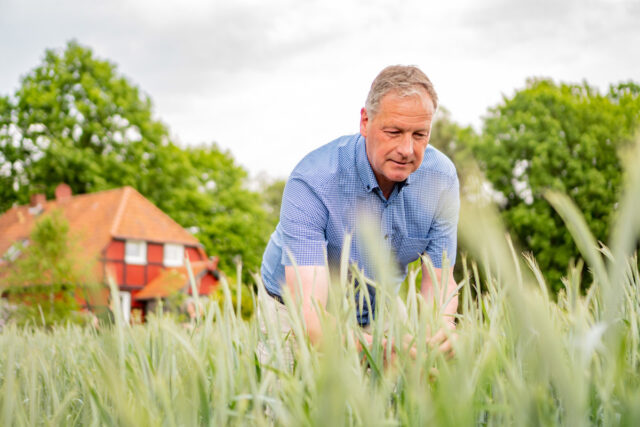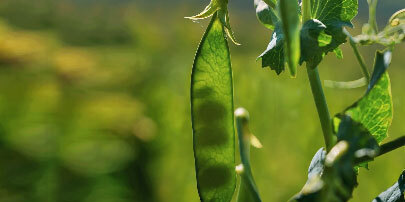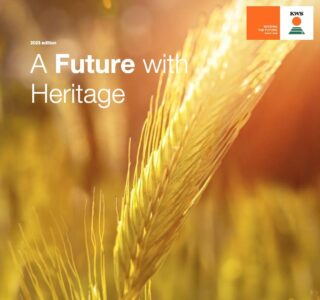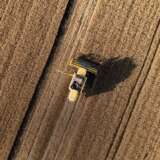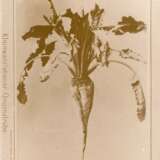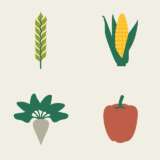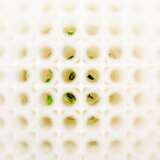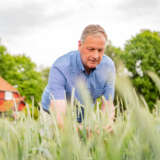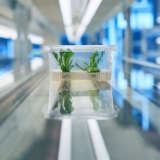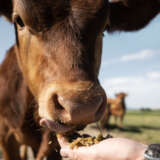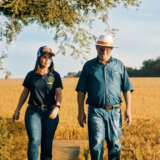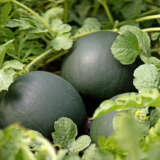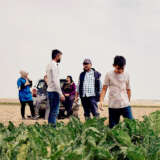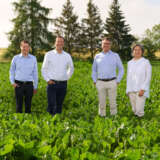Traditional cereals hold sustainability potential in the future
Hybrid rye grows beyond itself.
Rye is considered the quintessential ancient grain: Rich in carbohydrates, fiber and proteins, rye plays an important part in the balanced diets of humans and animals. In past decades, rye has assumed more of a supporting role to wheat, the headliner among cereals, but this compelling cereal with its multifaceted talents has what it takes to join the cast of principal players in the future. Rye’s potential to assume this key role is partly due to the continuous breeding progress KWS has made with hybrid varieties, a point that a recent sustainability study has confirmed.
“Our innovative hybrid rye varieties can contribute to both securing and increasing urgently needed yields while using fewer resources,” explains Dr. Andreas von Felde, who heads Global Product Management for animal feed at KWS. Over the past decade, innovative breeding work has led to improving yields by ten percent — on better soils, hybrid rye produces even higher yields than wheat. “Rising productivity is an essential aspect of sustainably producing food and feedstuff as well as an especially crucial factor in light of climate change,” von Felde says.
Our innovative hybrid rye varieties can contribute to both securing and increasing urgently needed yields while using fewer resources.
Dr. Andreas von Felde | Head of Global Product Management for animal feed at KWS
Robust ergot defense through innovative PollenPLUS technology
Lower susceptibility to ergot plays an important part in developing more robust varieties. Ergot is a fungal disease that can produce toxic compounds called alkaloids, which pose a potential hazard to humans and animals even in small quantities.
Rye, in particular, is considered susceptible to ergot infection because, as a cross-pollinator, it relies on pollen dispersal, and seeds cannot form unless the same species of plant is involved in pollination. If, however, the rye plants’ pollen does not disperse or the amount of pollen is greatly reduced, ergot can infect the unfertilized rye flowers that have already opened. The KWS hybrid rye PollenPLUS varieties demonstrate significantly more resistance to ergot as they produce more pollen, undergo quicker fertilization and have rapidly closing glumes (the chaffy bracts that enclose the grain). In 2004, the market saw KWS introduce the first ever modern hybrid rye varieties with only limited susceptibility to ergot following extensive research and development work by the plant breeding company. The PollenPLUS technology from KWS represents a major advance in plant breeding as well as an important contribution to good plant health and a consistently high yield potential.
KWS: With higher pollen shedding against ergot
Efficient nutrient uptake and sparing use of resources
Hybrid rye boasts properties that lower CO2 emissions, further underscoring the climate-friendly effect of these varieties: As a crop, hybrid rye can be regionally grown in quantities sufficient enough that long transport distances are eliminated. “In pork production alone, feeding pigs a rye-rich fodder could significantly reduce CO2 emissions when using regionally produced hybrid rye,” von Felde explains. Blonk Consultants, a global company and international leader in examining food system sustainability, has carried out an external study1 confirming this. According to the study, the cultivation of hybrid rye can make an important contribution to achieving Europe’s sustainability goals. The study, which was commissioned by KWS, shows that, per ton of crop yield, hybrid rye produces about 70 kilograms of CO2 — that is, about 20 percent less than, for example, wheat or barley. Compared with other cereals, hybrid rye leaves the smallest carbon footprint.
In addition, hybrid rye is particularly well suited for agricultural cultivation in dry regions: Rye has a pronounced root system, making it more efficient at taking up water and nutrients than other cereals. It requires a very limited amount of water as hybrid rye consumes even less water due to its smaller leaf surface — 25 percent less in comparison with wheat. The reduced amount of fertilizer and pesticides used also conserves resources and protects the environment.
“KWS has a broad portfolio of seeds for various crops,” von Felde stresses. Continuous advances in breeding work have substantially contributed to intensifying the spotlight on rye cultivation and providing farmers with an additional option for diversifying their crop rotations.
1 The data is available in the Global Feed LCA Institute (gfli) database www.globalfeedlca.org. The external sustainability study was commissioned by KWS.
KWS background
Good for the climate — and animals!
Not only sensible out in the field, but in animal feed, too — 60 percent of the rye grown in the European Union is used in animal feed: Hybrid rye is a very healthy animal feedstuff with many positive properties. Rye is rich in dietary fiber that easily ferments — so a high proportion of rye in mixed fodder delivers benefits that offer several positive effects. Rye’s benefits are especially apparent when it comes to pigs: improved gut health, less salmonella contamination, diminished boar taint and greater satisfaction in pens.
An award-worthy spirit!
Three Grain Welsh Vodka: This fine drop won Gold as the best single varietal vodka in Wales at the 2023 World Vodka Awards. Some of this brilliance is shining on KWS, too: This delicious blend uses the KWS rye variety TAYO and the barley variety SASSY as its basis. If that’s not reason enough for a toast!
